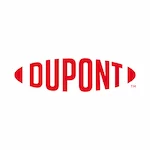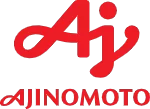
- Published 2024
- No of Pages: 200
- 20% Customization available
Global Polybutadiene Rubber (PBR) Market Size, Production, Sales, Average Product Price, Market Share
Global Polybutadiene Rubber (PBR) Market Revenue Size and Production Analysis, till 2032
Global Polybutadiene Rubber (PBR) Market Size is expected to grow at an impressive rate during the timeframe (2024-2032). Polybutadiene Rubber (PBR) demand is growing due to
- Increasing Tire Production:
PBR is a critical material in tire manufacturing due to its high resistance to wear, excellent elasticity, and low rolling resistance, which enhances fuel efficiency. With the surge in automobile production and sales, especially in developing economies, the demand for PBR has grown significantly. The shift towards eco-friendly and high-performance tires further propels its usage. - Growth in Automotive Industry:
Beyond tires, PBR is used in various automotive components like belts, hoses, and gaskets. The expanding automotive industry, especially electric vehicle (EV) production, boosts the consumption of PBR. - Increasing Demand in Footwear:
PBR is widely used in the production of sports shoes, soles, and other footwear components due to its superior elasticity, flexibility, and durability. Rising demand for comfortable and high-performance footwear supports PBR consumption. - Adoption in Industrial Applications:
PBR is used in conveyor belts, mechanical goods, and hoses, where abrasion resistance and elasticity are essential. Growth in construction and industrial activities further supports demand. - Expanding Use in Polymer Modification:
PBR is a vital raw material for manufacturing High-Impact Polystyrene (HIPS) and Acrylonitrile-Butadiene-Styrene (ABS) resins. These polymers are in high demand across electronics, automotive, and packaging industries. - Sustainability Trends:
The increasing focus on low rolling resistance tires to improve fuel efficiency aligns with sustainability goals, further driving demand for PBR as a preferred rubber material. - Emerging Markets and Urbanization:
Rapid urbanization and industrialization, particularly in Asia-Pacific economies like China, India, and Southeast Asia, are boosting demand for automotive vehicles, footwear, and construction materials—key end-use markets for PBR. - Technological Advancements:
Innovations in PBR production, such as neodymium-based PBR, offer enhanced mechanical properties, driving adoption in high-end tire and industrial applications.
Key Applications of PBR:
- Tires (70–75% of global consumption)
- Footwear
- Polymer modification (HIPS and ABS)
- Industrial goods
United States Polybutadiene Rubber (PBR) Market Trend and Business Opportunities
Key Market Trends
- Growing Demand for Eco-Friendly and High-Performance Tires
The automotive sector remains the largest consumer of PBR in the United States. Leading tire manufacturers are increasingly adopting neodymium-catalyzed PBR for green tires that offer lower rolling resistance and enhanced fuel efficiency.- Rising adoption of electric vehicles (EVs) is also driving the demand for specialized tires that incorporate high-quality PBR for improved durability and energy efficiency.
- Rise of Sustainable Manufacturing Practices
U.S. manufacturers are shifting towards sustainable production techniques and bio-based alternatives to reduce carbon footprints. This aligns with the global trend of developing environment-friendly rubber solutions, supporting PBR adoption. - Demand for High-Impact Polystyrene (HIPS) and ABS Resins
PBR plays a crucial role as a modifier in producing High-Impact Polystyrene (HIPS) and Acrylonitrile-Butadiene-Styrene (ABS) resins. These materials are widely used in the automotive, packaging, and electronics industries. Growth in these segments is further fueling PBR demand. - Footwear and Sports Industry Expansion
The footwear sector in the U.S. is witnessing rising demand for comfortable and durable shoes, especially sports and lifestyle footwear. PBR’s superior elasticity and wear resistance make it an ideal choice for shoe soles and other footwear components. - Technological Innovations in Industrial Applications
Advancements in industrial machinery and conveyor belts used in manufacturing and logistics have increased the need for abrasion-resistant rubber. PBR’s exceptional performance characteristics make it indispensable for industrial applications.
Business Opportunities in the U.S. PBR Market
- Automotive Sector Opportunities
- The United States, being one of the world’s largest automotive markets, presents significant opportunities for PBR manufacturers.
- Growing investments in electric vehicles (EVs) and hybrid vehicles are creating demand for high-performance tires, offering PBR producers lucrative business prospects.
- Expansion of the Footwear Industry
The increasing consumer preference for high-performance footwear offers a robust market for PBR manufacturers. Companies can capitalize on partnerships with major footwear brands to supply PBR for soles and other components. - Growth in Polymer Modification Applications
The rising demand for HIPS and ABS resins across the packaging, electronics, and automotive industries opens opportunities for PBR producers to cater to polymer manufacturers in the United States. - Focus on Sustainable Solutions
Companies investing in bio-based or recycled PBR products can tap into the growing sustainability trend in the U.S. market. Regulatory support for low-emission manufacturing processes further encourages innovation. - Infrastructure Development
The ongoing infrastructure boom in the U.S., driven by government initiatives, boosts demand for PBR in industrial products, including belts, hoses, and mechanical goods.
Market Drivers
- Rising Automotive Production: Increasing vehicle production and tire replacement demand are major drivers.
- Growing Demand for EV Tires: The shift towards electric vehicles promotes high-performance tire adoption.
- Industrial Growth: Rising industrial activities fuel demand for conveyor belts and other mechanical components.
- Expansion of the Polymer Industry: Increasing use of HIPS and ABS in automotive and consumer goods drives PBR consumption.
- Consumer Lifestyle Trends: Growing demand for durable, high-quality footwear and sports equipment.
Challenges
- Volatility in Raw Material Prices: Fluctuations in butadiene prices can impact production costs.
- Competition from Alternatives: Rising competition from synthetic rubber alternatives like styrene-butadiene rubber (SBR) may limit PBR market share.
- Regulatory Constraints: Strict environmental regulations surrounding petrochemical production could challenge manufacturers.
Key Business Strategies for PBR Manufacturers
- Invest in R&D to develop high-performance, sustainable PBR products.
- Forge Partnerships with leading automotive and footwear brands to secure long-term supply contracts.
- Leverage Technological Innovations to improve product efficiency and reduce production costs.
- Focus on Sustainability by adopting bio-based raw materials and eco-friendly manufacturing practices.
- Expand Distribution Networks to strengthen market presence across North America.
Europe Polybutadiene Rubber (PBR) Market Trend and Business Opportunities by Country
Key Market Trends in Europe
- Demand for Eco-Friendly Tires
The European Union’s strict emission regulations and sustainability goals have increased the demand for low rolling resistance and fuel-efficient tires. Tire manufacturers are adopting neodymium-catalyzed PBR to meet these requirements. Countries like Germany and France are leading this trend, with major tire manufacturers innovating for green solutions. - Growth of Electric Vehicles (EVs)
The rapid adoption of electric vehicles across Europe fuels the demand for high-performance tires that incorporate PBR for enhanced durability and reduced energy loss. The EV market growth in Norway, Germany, and the Netherlands presents significant opportunities for PBR manufacturers. - Rising Demand in Industrial Applications
Europe’s thriving industrial sector drives the use of PBR in conveyor belts, hoses, and mechanical goods. Infrastructure development and expanding manufacturing industries in Eastern Europe further support market growth. - Expansion in Polymer Modification
The increasing demand for High-Impact Polystyrene (HIPS) and Acrylonitrile-Butadiene-Styrene (ABS) in the automotive, packaging, and electronics sectors boosts PBR consumption as a key modifier. - Footwear Industry Growth
Countries like Italy and Spain, known for their footwear production, are witnessing rising demand for high-quality, durable shoe soles. PBR’s superior elasticity makes it an ideal material for footwear manufacturing.
Country-Wise Analysis and Opportunities
- Germany
- Market Size and Growth: Germany is the largest market for PBR in Europe due to its strong automotive industry. Leading automakers like BMW, Mercedes-Benz, and Volkswagen drive significant demand for PBR-based tires.
- Key Opportunities: Increasing demand for green tires and EV-specific tires opens growth avenues. Germany also leads in HIPS production, supporting PBR use in polymer applications.
- Trend: High focus on R&D and innovation in tire manufacturing.
- France
- Market Drivers: The French automotive sector, supported by companies like Renault and Michelin, fuels PBR demand. The country’s focus on sustainable manufacturing aligns with PBR’s role in eco-friendly solutions.
- Opportunities: Growing EV adoption and government initiatives for carbon neutrality drive demand for fuel-efficient tires.
- Trend: Expansion of polymer modification and industrial goods sectors.
- Italy
- Market Scope: Italy’s footwear manufacturing industry is a major driver of PBR demand. The country also contributes to industrial goods production.
- Key Opportunity: Partnerships with footwear manufacturers and expansion into specialty industrial applications.
- Trend: Rising demand for high-quality and durable footwear soles.
- United Kingdom
- Market Drivers: The UK’s focus on sustainable transportation and EV growth drives demand for advanced tire technologies using PBR.
- Opportunities: Rising demand for HIPS and ABS in the packaging and electronics sectors supports PBR consumption.
- Trend: Increasing investment in electric vehicle infrastructure.
- Spain
- Key Industries: Spain’s strong presence in footwear and automotive production boosts PBR demand.
- Opportunities: Expanding footwear exports and growing tire manufacturing capacities present new business prospects.
- Trend: Adoption of neodymium-based PBR for high-performance tires.
- Eastern Europe (Poland, Czech Republic, Hungary)
- Market Opportunities: Rapid industrialization and infrastructure development in Eastern Europe create demand for industrial applications, including PBR-based conveyor belts and hoses.
- Trend: Rising investment in automotive production plants by global manufacturers.
- Rest of Europe
- Smaller markets like Scandinavia and the Netherlands are witnessing growth due to the rising penetration of electric vehicles and increased focus on green technologies.
Business Opportunities in the European PBR Market
- Green Tires and EV-Specific Tires
- Companies can focus on neodymium-catalyzed PBR production to cater to rising demand for fuel-efficient, sustainable tires in Europe.
- Partnerships with Automotive and Footwear Industries
- Strengthening partnerships with automotive giants in Germany, France, and the UK, as well as footwear manufacturers in Italy and Spain, will enhance business growth.
- Expansion in Polymer Modification
- The growing demand for HIPS and ABS resins in the electronics, automotive, and packaging sectors creates opportunities for PBR manufacturers.
- Focus on Industrial Goods
- Rising investments in infrastructure and industrial manufacturing across Eastern Europe offer growth prospects for PBR in mechanical components.
- Sustainability Solutions
- Leveraging bio-based PBR production technologies can align with Europe’s stringent environmental regulations and sustainability goals.
Middle East Polybutadiene Rubber (PBR) Market Trend and Business Opportunities by Country
Key Market Trends in the Middle East
- Increasing Demand for Automotive Tires
- The growing automotive market in the Middle East, coupled with rising imports of vehicles and expanding local manufacturing, boosts PBR demand for tire production.
- Countries like Saudi Arabia and the UAE are experiencing increased tire demand due to rising vehicle ownership.
- Growth in Infrastructure and Industrial Manufacturing
- Massive infrastructure projects, industrial growth, and construction activities across the region fuel the demand for industrial goods like conveyor belts, mechanical parts, and hoses made with PBR.
- Rising Investments in Polymer Modification
- Polybutadiene Rubber is a key raw material in producing High-Impact Polystyrene (HIPS) and Acrylonitrile-Butadiene-Styrene (ABS), which are in demand in packaging, electronics, and automotive sectors across the region.
- Sustainability Initiatives
- Governments are encouraging industries to adopt environment-friendly materials and sustainable practices, presenting opportunities for bio-based and high-performance PBR solutions.
- Expansion of the Footwear Sector
- Countries like the UAE and Saudi Arabia are experiencing a growing demand for high-quality, durable footwear, driving PBR usage in shoe soles.
Country-Wise Analysis and Opportunities
- Saudi Arabia
- Market Drivers:
- The country is the largest economy in the Middle East, with a growing automotive market and increasing investments in industrial manufacturing and infrastructure.
- Leading tire manufacturers are setting up production facilities, increasing the demand for PBR.
- Opportunities:
- Expansion of the automotive sector under Vision 2030.
- Rising demand for industrial conveyor belts in mega construction projects like NEOM.
- Trend:
- Growing demand for green tires in line with sustainability goals.
- United Arab Emirates (UAE)
- Market Drivers:
- The UAE’s robust infrastructure and industrial development contribute to the demand for PBR-based industrial goods and tires.
- The expanding transportation and logistics sectors further drive tire replacement needs.
- Opportunities:
- Partnerships with automotive suppliers for PBR tires and footwear brands for high-quality soles.
- Demand for high-performance polymers in the electronics and packaging sectors.
- Trend:
- Adoption of eco-friendly and fuel-efficient tires for sustainable transport solutions.
- Qatar
- Market Drivers:
- Qatar’s booming construction sector, spurred by infrastructure projects like World Cup developments and urbanization, increases the demand for PBR in industrial applications.
- Opportunities:
- Rising investments in industrial rubber products such as belts, hoses, and mechanical goods.
- Trend:
- Increasing focus on advanced tire manufacturing technologies.
- Kuwait
- Market Drivers:
- Growing urbanization and rising consumer demand for automobiles increase the need for PBR-based tires and footwear products.
- Opportunities:
- Strengthening local supply chains for industrial rubber components and specialty footwear.
- Trend:
- Development of industrial machinery and conveyor systems in manufacturing plants.
- Oman
- Market Drivers:
- Oman’s industrial growth, supported by its infrastructure development and focus on non-oil sectors, creates strong demand for PBR in mechanical goods and tires.
- Opportunities:
- Investment opportunities in polymer modification applications for packaging and automotive.
- Trend:
- Development of regional tire manufacturing hubs to meet growing demand.
Business Opportunities in the Middle East PBR Market
- Tire Manufacturing
- The Middle East’s growing automotive industry creates strong opportunities for PBR suppliers to collaborate with tire manufacturers for the production of eco-friendly and high-performance tires.
- Industrial Applications
- Rising infrastructure projects and industrialization offer opportunities for PBR manufacturers in producing conveyor belts, hoses, and mechanical components.
- Polymer Modification
- Increasing demand for HIPS and ABS resins in the packaging, electronics, and automotive industries drives PBR adoption.
- Footwear Industry
- Partnerships with footwear manufacturers in countries like Saudi Arabia and the UAE present growth opportunities for PBR in durable and high-performance soles.
- Sustainability Solutions
- Investment in bio-based or recycled PBR products can help businesses align with environmental policies and sustainability goals across the Middle East.
Asia Pacific Polybutadiene Rubber (PBR) Market Trend and Business Opportunities by Country
Key Market Trends in Asia-Pacific
- Rapid Growth in Automotive Tire Manufacturing
- The automotive sector is the largest consumer of PBR in the Asia-Pacific region.
- Countries like China, India, and Japan are witnessing significant growth in tire production, both for domestic use and exports.
- The adoption of fuel-efficient tires is driving demand for neodymium-based PBR.
- Expansion of Footwear Manufacturing
- Asia-Pacific is the hub for footwear production, especially in China, India, Vietnam, and Indonesia. PBR’s elasticity and abrasion resistance make it ideal for durable shoe soles.
- Growth in Industrial Applications
- Infrastructure development across Asia, including the use of conveyor belts, hoses, and industrial components, is increasing PBR demand.
- Rising Demand for Polymer Modification
- The demand for High-Impact Polystyrene (HIPS) and Acrylonitrile-Butadiene-Styrene (ABS) in automotive, electronics, and packaging sectors is propelling PBR consumption.
- Focus on Sustainability and Green Manufacturing
- Countries like Japan and South Korea are driving innovations in bio-based PBR and sustainable production techniques to align with environmental regulations.
Country-Wise Analysis and Opportunities
- China
- Market Drivers:
- China is the largest consumer and producer of PBR globally, with its dominant automotive and industrial sectors.
- Rising vehicle ownership and government support for electric vehicles (EVs) boost demand for PBR in tires.
- Opportunities:
- Partnerships with leading tire manufacturers like Sailun, Zhongce, and Giti Tires.
- Focus on sustainable tire production for domestic and export markets.
- Trend:
- Innovation in neodymium-based PBR for green tires and export-oriented production.
- India
- Market Drivers:
- India’s growing automotive industry, coupled with rising urbanization and infrastructure development, is fueling demand for PBR.
- The footwear sector, driven by increasing domestic consumption and exports, is a major end-user of PBR.
- Opportunities:
- Expansion of tire manufacturing facilities and partnerships with global automakers.
- Investment in industrial rubber products for construction and manufacturing.
- Trend:
- Rapid shift towards eco-friendly and high-performance tires.
- Japan
- Market Drivers:
- Japan’s advanced automotive sector, focusing on EVs and hybrid vehicles, drives demand for high-performance tires made with PBR.
- Japan is also a key hub for HIPS and ABS production for electronics and packaging industries.
- Opportunities:
- Development of sustainable PBR solutions for eco-conscious manufacturers.
- Trend:
- High focus on R&D and bio-based PBR technologies.
- South Korea
- Market Drivers:
- South Korea’s automotive and electronics industries drive significant demand for PBR.
- The country is home to major tire manufacturers like Hankook Tire and Kumho Tire, who are expanding production capacities.
- Opportunities:
- Collaboration with automakers for EV-specific tire production.
- Growth in polymer modification for HIPS and ABS resins.
- Trend:
- Technological advancements in fuel-efficient and durable tires.
- Southeast Asia (Vietnam, Indonesia, Thailand, Malaysia)
- Market Drivers:
- These nations are hubs for footwear manufacturing, with PBR playing a crucial role in producing high-quality shoe soles.
- Growing automotive production and industrial expansion fuel PBR demand.
- Opportunities:
- Establishing supply chains for industrial rubber products in construction and manufacturing.
- Partnerships with global tire and footwear manufacturers relocating production to the region.
- Trend:
- Increased focus on export-oriented production for global markets.
Business Opportunities in the Asia-Pacific PBR Market
- Automotive Tire Manufacturing
- With the Asia-Pacific region accounting for over 50% of global tire production, businesses can partner with local tire manufacturers to supply neodymium-based PBR for high-performance and eco-friendly tires.
- Footwear Industry Expansion
- The thriving footwear sector in China, India, and Southeast Asia presents significant opportunities for PBR in durable shoe soles.
- Industrial Applications
- Rapid urbanization and industrialization in countries like India, China, and Vietnam create strong demand for PBR in conveyor belts, hoses, and mechanical goods.
- Polymer Modification
- Rising demand for HIPS and ABS resins in the electronics, automotive, and packaging industries offers growth prospects for PBR suppliers.
- Sustainability Solutions
- Countries like Japan and South Korea are leading efforts in bio-based and sustainable PBR production, creating opportunities for innovation and eco-friendly manufacturing.
Global Polybutadiene Rubber (PBR) Analysis by Market Segmentation
1. By Type
| Type | Description | Market Share |
| High-Cis PBR | – Superior abrasion resistance, high tensile strength. – Used primarily in tire manufacturing. |
Largest segment (60–70%) |
| Low-Cis PBR | – Offers moderate elasticity and abrasion resistance. – Used in industrial goods and footwear. |
Moderate demand |
| High Vinyl PBR | – High elasticity and improved resistance to dynamic fatigue. – Used in specialized polymer modification. |
Growing adoption |
| Liquid PBR | – Used as a plasticizer in adhesives, sealants, and coatings. | Emerging market |
Key Insights:
- High-Cis PBR dominates the global market due to its extensive use in tire manufacturing.
- The liquid PBR segment is gaining traction due to its application in adhesives and specialty coatings, especially in construction and automotive sectors.
2. By Application
| Application | Description | Market Share |
| Tires | – Accounts for the largest share of PBR demand (65–70%). – High-Cis PBR is used for durability and fuel efficiency. |
Largest segment |
| Footwear | – PBR is used in shoe soles for flexibility, durability, and wear resistance. | Growing demand |
| Polymer Modification | – PBR is a modifier for High-Impact Polystyrene (HIPS) and ABS resins. | Rapid growth |
| Industrial Goods | – Conveyor belts, hoses, mechanical components, and gaskets. | Significant usage |
| Adhesives & Sealants | – Liquid PBR serves as a plasticizer in adhesives and specialty sealants. | Niche market |
Key Insights:
- Tire manufacturing remains the largest application, driven by increasing automotive production, tire replacement demand, and the rise of electric vehicles (EVs).
- Polymer modification is witnessing rapid growth due to the rising demand for HIPS and ABS resins across packaging, automotive, and electronics industries.
3. By End-Use Industry
| Industry | Description | Market Share |
| Automotive | – PBR is a critical material in tires, gaskets, hoses, and belts. | Dominant sector (70%) |
| Footwear | – Used for shoe soles in sports, casual, and industrial footwear. | Significant growth |
| Construction & Industry | – Conveyor belts, seals, mechanical parts in infrastructure and industrial applications. | Rising demand |
| Packaging & Electronics | – PBR-modified HIPS and ABS are used in packaging materials and electronic components. | Emerging opportunities |
Key Insights:
- The automotive industry dominates PBR demand, driven by increasing vehicle production, EV adoption, and growing demand for eco-friendly tires.
- Footwear and industrial applications are also growing due to urbanization, rising infrastructure projects, and consumer demand for high-performance shoes.
4. By Region
| Region | Key Countries | Market Trends |
| Asia-Pacific | China, India, Japan, South Korea, Southeast Asia | – Largest market (50–55% share). – Strong automotive production and footwear manufacturing. |
| North America | United States, Canada | – High demand for sustainable tires and polymer-modified products. |
| Europe | Germany, France, Italy, UK, Spain | – Demand driven by green tire manufacturing, industrial applications, and polymer modifications. |
| Middle East & Africa | Saudi Arabia, UAE, Qatar, South Africa | – Rising industrialization, infrastructure development, and growing automotive sector. |
| Latin America | Brazil, Mexico, Argentina | – Growing demand for tires and industrial goods in line with urbanization. |
Key Insights:
- Asia-Pacific leads the global PBR market due to the dominant automotive and footwear sectors in countries like China, India, and Japan.
- North America and Europe are key markets for green tires and sustainable PBR production, driven by stringent environmental regulations.
- The Middle East & Africa and Latin America offer emerging opportunities in industrial applications and infrastructure growth.
Key Growth Drivers Across Segments
- Tire Demand Growth:
-
- Rising global vehicle production and replacement needs drive demand for PBR-based high-performance tires.
- The shift towards fuel-efficient and green tires enhances opportunities for neodymium-based High-Cis PBR.
- Polymer Modification:
-
- Increasing demand for HIPS and ABS resins in packaging, electronics, and automotive industries accelerates PBR consumption.
- Footwear Sector:
-
- Consumer preference for durable, flexible, and high-quality soles supports PBR growth in footwear applications.
- Industrial Goods and Infrastructure:
-
- Expansion in construction and manufacturing boosts demand for PBR in conveyor belts, hoses, seals, and gaskets.
- Sustainability Trends:
-
- Growing focus on bio-based PBR and sustainable manufacturing processes to comply with global environmental regulations.
Polybutadiene Rubber (PBR) Production and Import-Export Scenario
- Production Scenario
Key Producing Regions and Countries
| Region | Major Producing Countries | Production Insights |
| Asia-Pacific | China, Japan, India, South Korea | – Asia-Pacific accounts for over 50% of global production. – China leads with vast production facilities driven by automotive and tire demand. |
| North America | United States, Canada | – Significant production capacity, catering to domestic and export demand. |
| Europe | Germany, France, Italy | – Europe has modern facilities with a focus on sustainable PBR production. |
| Middle East | Saudi Arabia, UAE | – Growing production capacity driven by petrochemical investments. |
| Latin America | Brazil, Mexico | – Emerging production hubs with a focus on industrial and automotive sectors. |
Key Insights:
- Asia-Pacific dominates PBR production due to lower production costs, ample raw materials, and strong demand from the automotive and industrial sectors.
- North America and Europe focus on advanced, high-performance PBR production to cater to eco-friendly and high-specification markets.
- Middle East and Latin America are emerging as production hubs due to growing investments in petrochemical facilities.
- Import-Export Scenario
Global Trade Dynamics
The global PBR market is characterized by trade flows from leading producing countries to regions with growing demand, particularly for automotive tires, polymer modification, and industrial applications.
| Region | Import/Export Dynamics | Key Countries |
| Asia-Pacific | – Exporter: China, Japan, South Korea. – Importer: India, Vietnam, Thailand. |
– China dominates global exports. – India imports to meet growing domestic tire demand. |
| North America | – Exporter: United States. – Importer: Mexico, Canada. |
– U.S. exports high-quality PBR to Latin America and Asia. |
| Europe | – Exporter: Germany, France. – Importer: Eastern Europe. |
– Germany and France export to neighboring countries and North America. |
| Middle East | – Emerging Exporter: Saudi Arabia, UAE. – Importer of advanced grades. |
– Growing export opportunities as Middle Eastern petrochemical facilities expand. |
| Latin America | – Importer: Brazil, Mexico. | – Brazil imports PBR for its growing automotive sector. |
| Africa | – Importer: South Africa, Nigeria. | – South Africa imports PBR for automotive and industrial applications. |
- Key Trade Observations
- Asia-Pacific as a Dominant Exporter:
- China, Japan, and South Korea lead global exports due to their high production capacities and technological advancements.
- Southeast Asia, including Vietnam, Indonesia, and Thailand, remains an important import hub to support their automotive and footwear sectors.
- North America’s Trade Flow:
- The United States is both a producer and exporter, particularly for high-quality and specialized PBR grades.
- Mexico imports PBR to support its expanding automotive manufacturing industry.
- Europe’s Balanced Trade:
- Germany and France are key exporters to other European countries and North America.
- Eastern Europe, including Poland and Hungary, relies on imports to meet industrial demands.
- Emerging Middle East Players:
- Countries like Saudi Arabia and the UAE are ramping up PBR production to cater to both domestic demand and export opportunities in Asia and Africa.
- Latin America and Africa as Import-Dependent Regions:
- Brazil and Mexico in Latin America, as well as South Africa and Nigeria in Africa, rely on PBR imports to fulfill their automotive and industrial sector requirements.
- Challenges and Opportunities in Global Trade
Challenges
- Raw Material Price Volatility:
- Fluctuations in butadiene prices affect PBR production costs and trade competitiveness.
- Trade Barriers and Regulations:
- Environmental regulations in Europe and North America can restrict the trade of certain grades of PBR.
- Geopolitical Factors:
- Trade tensions and tariffs can disrupt the smooth flow of PBR across regions.
Opportunities
- Growing Automotive and EV Demand:
- Rising tire production and demand for eco-friendly tires present new opportunities for PBR exporters.
- Expansion in Emerging Markets:
- Increased demand in India, Southeast Asia, Latin America, and Africa creates significant export potential.
- Sustainability and Innovation:
- Producers focusing on bio-based and sustainable PBR can gain a competitive edge in regulated markets like Europe and North America.
- Strategic Investments in Petrochemical Hubs:
- The Middle East and Asia-Pacific offer opportunities for cost-effective production and global trade.
Market Scenario, Demand vs Supply, Average Product Price, Import vs Export, till 2032
- Global Polybutadiene Rubber (PBR) Market revenue and demand by region
- Global Polybutadiene Rubber (PBR) Market production and sales volume
- Import-export scenario
- Average product price
- Market player analysis, competitive scenario, market share analysis
- Business opportunity analysis
Key questions answered in the Global Polybutadiene Rubber (PBR) Market Analysis Report:
- What is the market size for Polybutadiene Rubber (PBR)?
- What is the yearly sales volume of Polybutadiene Rubber (PBR) and how is the demand rising?
- Who are the top market players by market share, in each product segment?
- Which is the fastest growing business/ product segment?
- What should be the business strategies and Go to Market strategies?
The report covers Polybutadiene Rubber (PBR) Market revenue, Production, Sales volume, by regions, (further split into countries):
- Asia Pacific (China, Japan, South Korea, India, Indonesia, Vietnam, Rest of APAC)
- Europe (UK, Germany, France, Italy, Spain, Benelux, Poland, Rest of Europe)
- North America (United States, Canada, Mexico)
- Latin America (Brazil, Argentina, Rest of Latin America)
- Middle East & Africa
Table of Contents:
- Product Overview and Scope of Polybutadiene Rubber (PBR)
- Polybutadiene Rubber (PBR) Segment Analysis by Product Category
- Global Polybutadiene Rubber (PBR) Revenue Estimates and Forecasts (2019-2032)
- Global Polybutadiene Rubber (PBR) Production Estimates and Forecasts (2019-2032)
- Market Competition by Manufacturers
- Global Polybutadiene Rubber (PBR) Production by Manufacturers
- Global Polybutadiene Rubber (PBR) Revenue Market Share by Manufacturers (2019-2023)
- Production Analysis
- Polybutadiene Rubber (PBR) Production, Revenue, Price and Gross Margin (2019-2024)
- Polybutadiene Rubber (PBR) Production VS Export
- Polybutadiene Rubber (PBR) Consumption VS Import
- Consumption Analysis
- Polybutadiene Rubber (PBR) Consumption by Region
- Polybutadiene Rubber (PBR) Consumption by Product
- Polybutadiene Rubber (PBR) Consumption Market Share by Product
- Segment by Machine Type
- Global Production of Polybutadiene Rubber (PBR) by Product (2019-2024)
- Revenue Market Share by Product (2019-2024)
- Production, Revenue, Price and Gross Margin (2019-2024)
- Polybutadiene Rubber (PBR) Manufacturing Cost Analysis
- Polybutadiene Rubber (PBR) Key Raw Materials Analysis
- Key Raw Materials
- Key Suppliers of Raw Materials
- Proportion of Manufacturing Cost Structure
- Polybutadiene Rubber (PBR) Industrial Chain Analysis
- Marketing Channel, Distributors and Customers
- Polybutadiene Rubber (PBR) Distributors List
- Polybutadiene Rubber (PBR) Sales Partners
- Polybutadiene Rubber (PBR) Customers List
- Production and Supply Forecast
“Every Organization is different and so are their requirements”- Datavagyanik
Companies We Work With






Do You Want To Boost Your Business?
drop us a line and keep in touch

